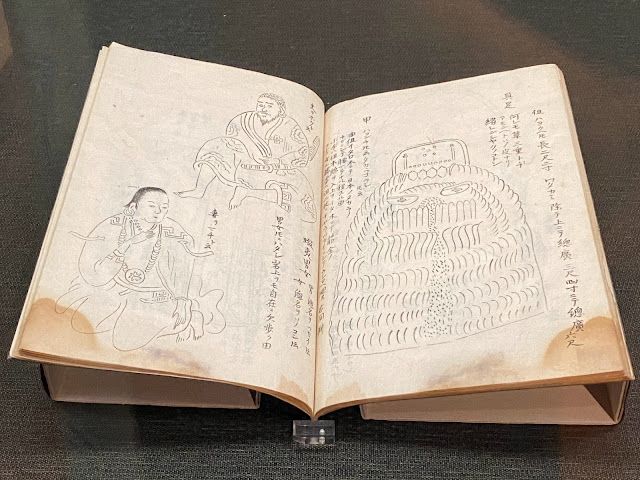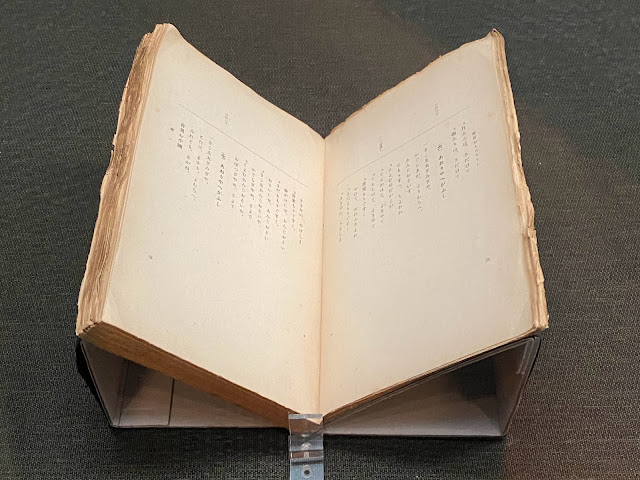東洋文庫ミュージアムの膨大な書籍コレクションから、日本語の歴史をたどる、というテーマでの展覧会。
『三国志』の魏志倭人伝の中には、当時の日本語と考えられる言葉が書かれている。おそらくその頃には、現在につながる日本語はすでに成立していたようだ。
また、琉球語は日本語との関係が強いようだが、アイヌ語は日本語とは系統に違う言語とのこと。
日本語の50音図は、サンスクリットの読み方を整理した表から成立したという。
日本語に限らず、言葉の歴史というものは、その民族の長い歴史の中で、少しづつ変化しながら、大きな流れの中で生まれ、変化してきたものと考えていた。
しかし、この展覧会で展示されていたような、ある1冊の書物の存在が、日本語のその後の普及や変化に、少なからぬ影響を与えたかもしれないことを知って、全体だけではない、個の重要さにも気付かされた気がした。
印象に残った展示品から、万葉仮名で書かれた万葉集、新井白石の蝦夷志、金田一京助のアイヌ聖典、おもろそうし、ドチリーナ・キリシタン、解体新書、福沢諭吉による華英辞書など。
An exhibition with the theme of tracing the history of the Japanese language from the vast book collection of the Toyo Bunko Museum.
In the Gishi Wajinden of "Sangokushi", words that are thought to be Japanese at that time are written. It seems that by that time, the Japanese language that we know today had already been established.
Also, Ryukyu language seems to have a strong relationship with Japanese, but Ainu language is said to be a different language from Japanese.
It is said that the 50 syllabary of Japanese was established from a table that arranged the readings of Sanskrit.
I thought that the history of language, not just Japanese, was born and changed in a big flow while changing little by little in the long history of the people.
However, knowing that the existence of a single book, such as the one on display at this exhibition, may have had a considerable influence on the subsequent spread and changes of the Japanese language, I realized that it was not just about the whole. I felt like I was reminded of the importance of the individual.
Some of the impressive exhibits include the Manyoshu written in Manyo-gana, Arai Hakuseki's Ezoshi, Kindaichi Kyosuke's Ainu scriptures, Omorososhi, Dochirina Christians, Kaitai Shinsho, and a Chinese-English dictionary by Yukichi Fukuzawa.







コメント
コメントを投稿